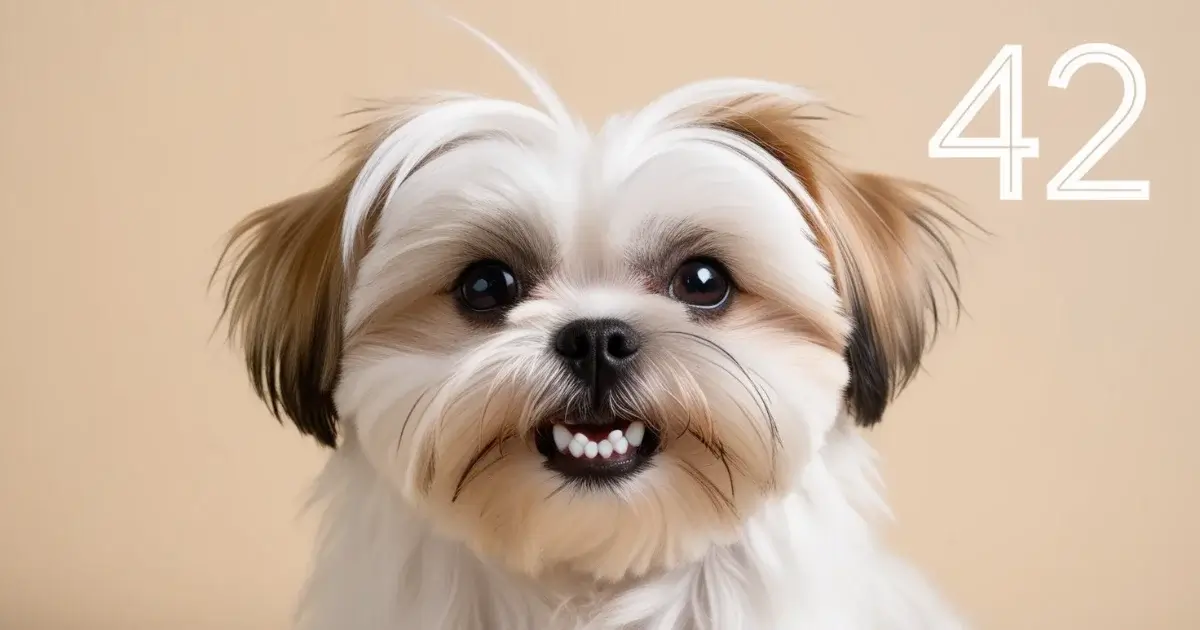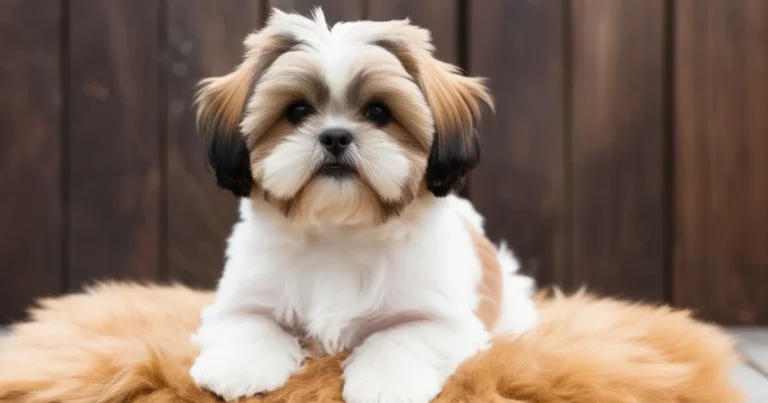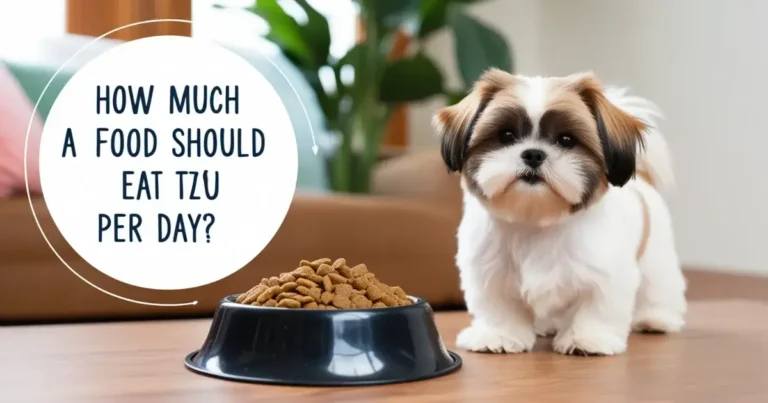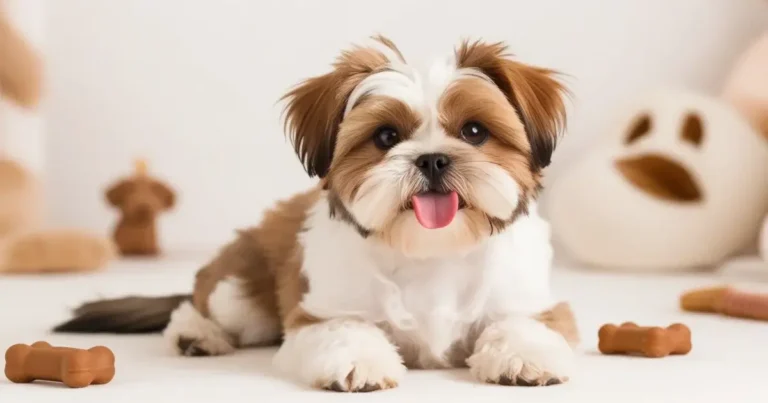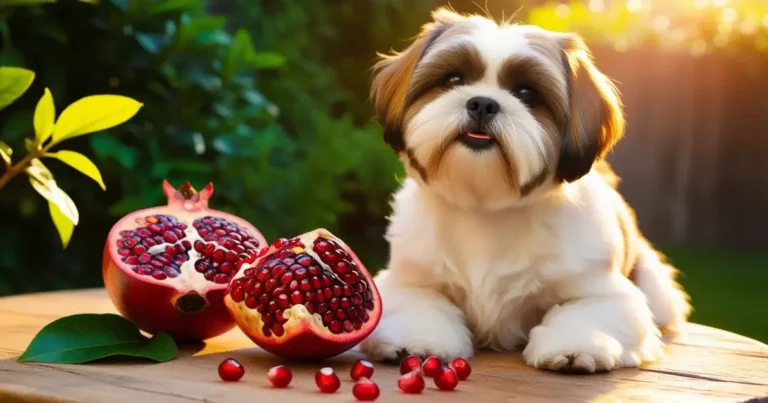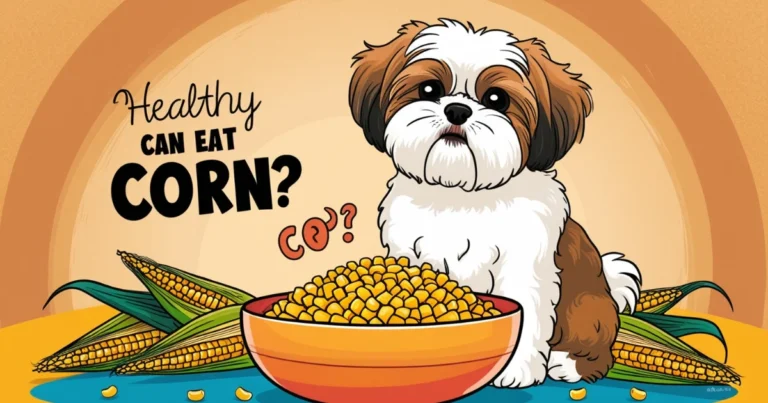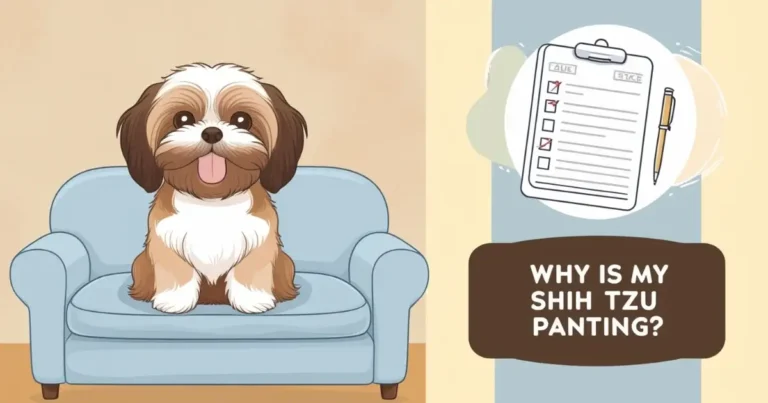Shih Tzu Teeth: Key Facts and Care for a Healthy Smile
Shih Tzus are known for their adorable faces and charming personalities. But their dental anatomy deserves attention too. Despite their small size, these dogs have the same number of teeth as larger breeds. So, how many teeth does a Shih Tzu have? Let’s explore their Shih tzu teeth structure, teething stages, common issues, and essential care tips.
Table of Contents
Understanding Shih Tzu Dental Anatomy
Total Number of Teeth in Shih Tzus
Shih Tzus have two sets of teeth in their lifetime:
| Stage | Number of Teeth |
| Puppy Teeth | 28 |
| Adult Teeth | 42 |
By adulthood, a Shih Tzu’s mouth contains 42 teeth, including incisors, canines, premolars, and molars. Despite their small mouths, they have no fewer teeth than larger breeds. If you’re wondering how many teeth does a Shih Tzu dog have, the answer is the same: 42 in total.

Teeth Types and Functions
Each type of tooth serves a specific role:
- Incisors: 12 teeth for grooming and light nibbling.
- Canines: 4 sharp teeth for gripping and tearing.
- Premolars: 16 teeth used for cutting and chewing food.
- Molars: 10 back teeth for grinding tough food.
For those asking how many teeth does a Maltese Shih Tzu have, the count and types are the same.
The Teething Journey: From Puppy to Adult
Puppy Teething Timeline
Teething begins early for Shih Tzu puppies.
- 2–4 weeks: First baby teeth appear.
- 6 weeks: Full set of 28 sharp baby teeth.
- 12 weeks: Baby teeth start to fall out.
During this stage, puppies chew excessively to soothe their gums. Providing chew toys can prevent damage to furniture and shoes.
Adult Teeth Development
- 12–16 weeks: Adult teeth start emerging.
- 6–7 months: Full set of 42 adult teeth is developed.
You might notice your puppy losing small teeth or chewing more vigorously as their adult teeth come in.
Common Dental Issues in Shih Tzus
Shih Tzus are prone to dental problems due to their small mouths and brachycephalic (short-muzzled) structure.
Overcrowding
With 42 teeth in a small mouth, overcrowding is common. Misaligned teeth trap food, leading to plaque buildup, bad breath, and tooth decay.
Retained Baby Teeth
Sometimes, baby teeth don’t fall out when adult teeth come in. This condition, called retained deciduous teeth, can cause discomfort and improper alignment. These retained teeth often need to be removed by a vet.
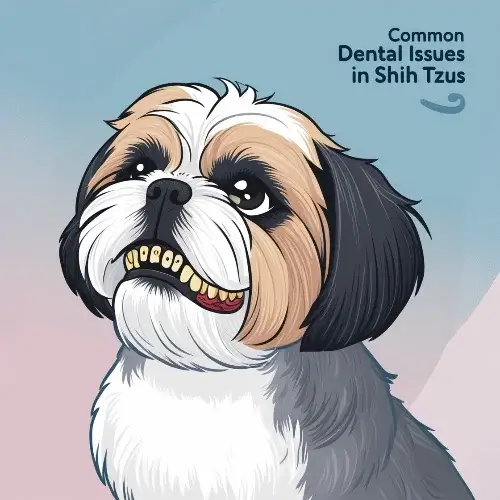
Plaque and Tartar Buildup
Food particles trapped between teeth lead to plaque. If untreated, it hardens into tartar, causing gum inflammation and periodontal disease. Regular brushing helps prevent this.
Malocclusion (Underbites and Overbites)
Shih Tzus often have an underbite, giving them a distinct appearance. Severe cases may interfere with eating or cause gum injuries.
Essential Dental Care Tips for Shih Tzus
Daily Brushing
Regular brushing is the best way to maintain healthy Shih Tzu teeth. Use:
- A small toothbrush or finger brush.
- Dog-friendly toothpaste (never human toothpaste).
Brush gently once a day, focusing on areas prone to tartar buildup.
Diet for Dental Health
Diet plays a key role in oral hygiene:
- Dry kibble scrapes off plaque.
- Chew toys and dental chews promote gum health.
- Avoid hard items like bones or antlers to prevent fractures.
Vet Checkups and Professional Cleaning
- Visit the vet annually for dental exams.
- Schedule professional cleaning to remove tartar and address hidden issues under the gumline.
Can Shih Tzus Live Without Teeth?
Yes, they can! Shih Tzus adapt well to life without teeth. They can eat wet food or softened kibble comfortably. Their diet should be adjusted to ensure proper nutrition, but they remain happy and active with the right care.
Conclusion: Caring for Your Shih Tzu’s Teeth
Maintaining your Shih Tzu teeth health ensures their comfort and longevity. Brush daily, provide a balanced diet, and schedule regular vet checkups to prevent problems. Healthy teeth mean a happier dog. Start your care routine today!
FAQs
How many teeth does a Shih Tzu dog have during puppyhood?
Shih Tzu puppies have 28 temporary teeth, also known as deciduous teeth. These sharp teeth start appearing at about 2 weeks old and begin falling out around 12 weeks as their adult teeth come in.
How many teeth does a Maltese Shih Tzu have, and are they different from Shih Tzus?
A Maltese Shih Tzu also has 42 adult teeth, just like a purebred Shih Tzu. The dental anatomy and teeth count are identical for both breeds, as they share similar physical traits.
What should I do if my Shih Tzu has extra or missing teeth?
Extra teeth, often due to retained baby teeth, or missing teeth should be evaluated by a vet. These conditions can cause crowding or alignment issues, which may require treatment or extraction to prevent dental problems.
How can I ensure my Shih Tzu’s teeth stay healthy?
Brush their teeth daily with dog-safe toothpaste, feed them dry kibble or dental chews, and schedule regular vet checkups. Early care prevents common problems like plaque buildup and periodontal disease, keeping their teeth and gums healthy.
